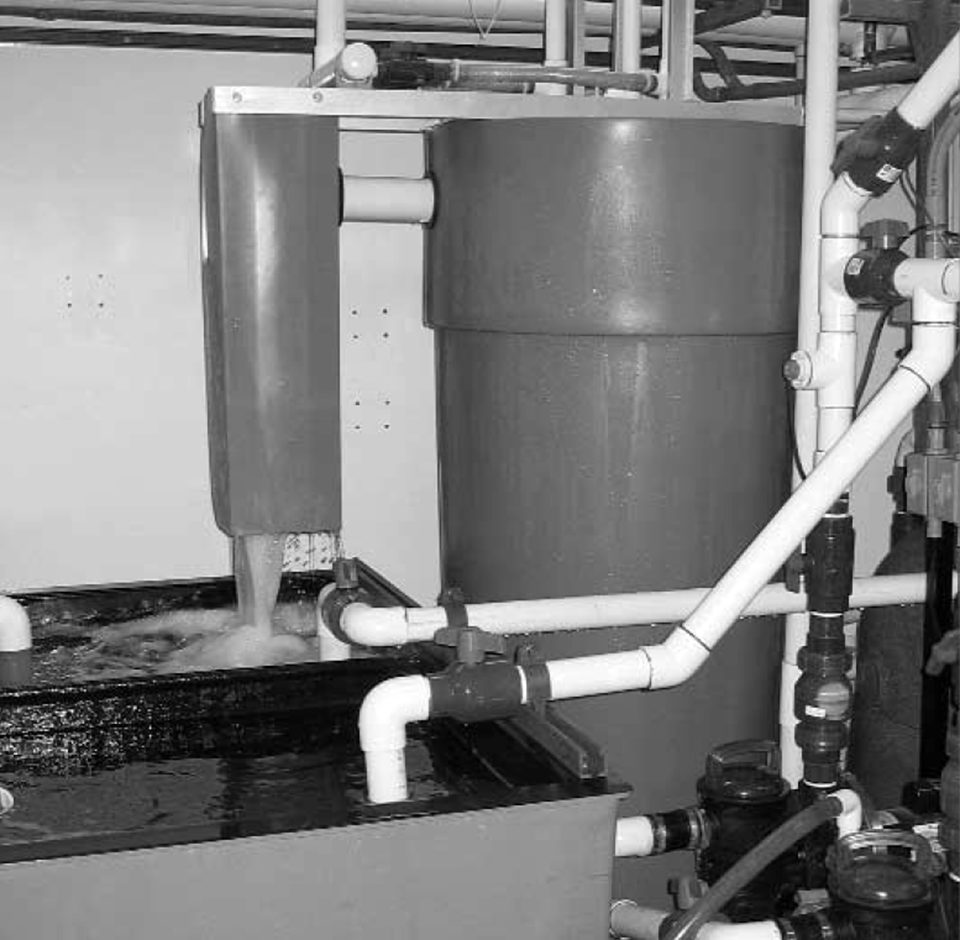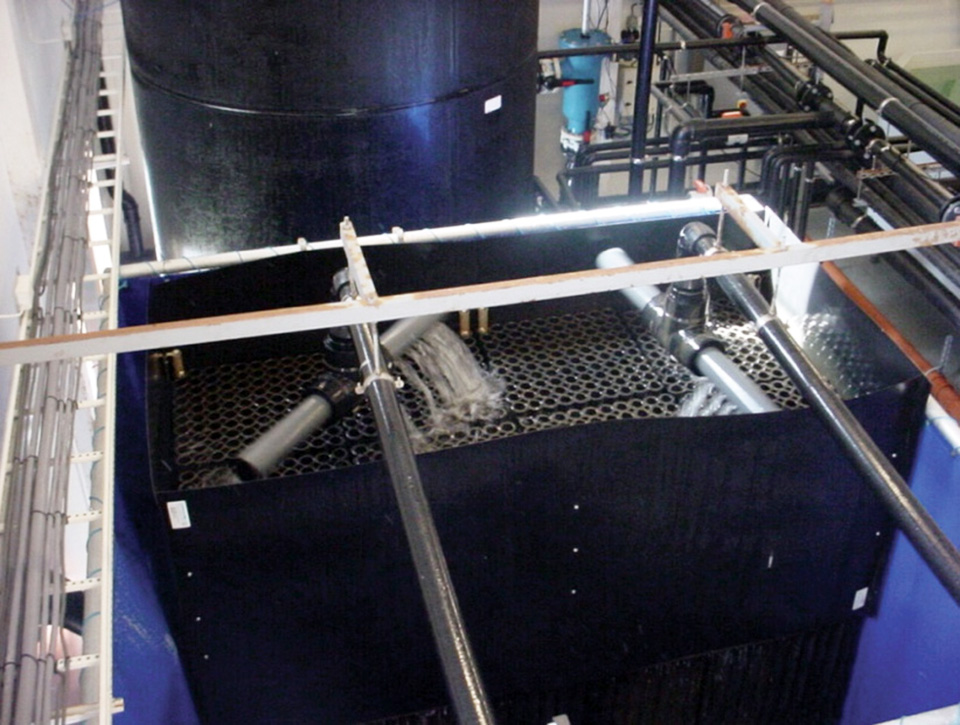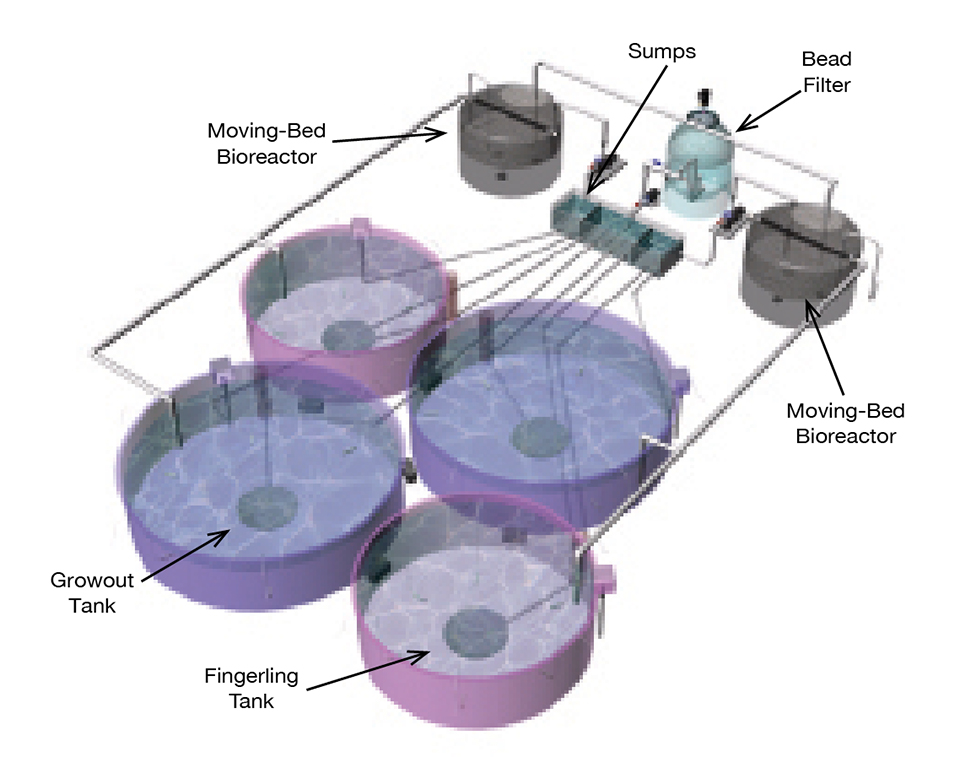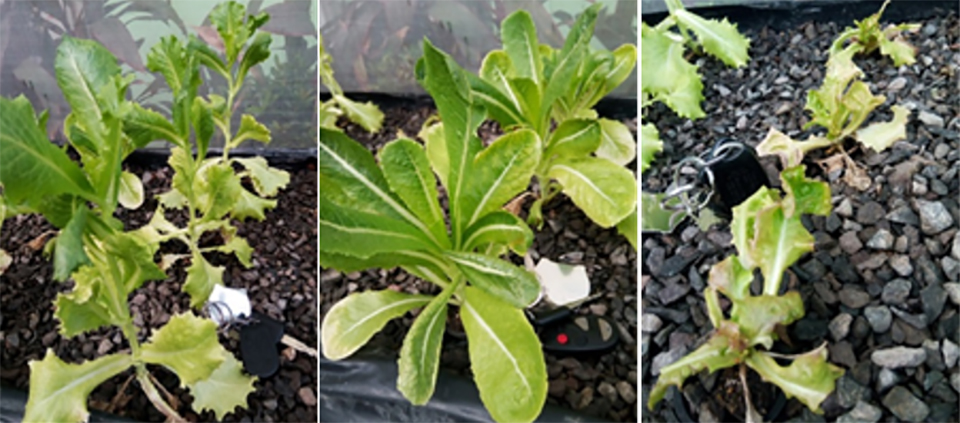Thin-film biological filters

Aquaculturists have tackled more and more diversified species over the last 20 years as aquaculture continues to develop worldwide. Concurrently, there has been a trend to close up the life cycles of these commercially cultured species.
As shrimp farming continues to spread through South America, Asia, and elsewhere, and fish farming moves away from land-based operations, the importance of having a continuous and stable supply of juvenile animals to supply these operations is critical to their economic viability. High-quality water to enhance mating and encourage larval growth has therefore become more and more important.
Benefits
An excellent example of this focus on water quality is the proliferation of fluidized-bed biofiltration systems at shrimp hatcheries in Mexico, Central America, and South America. Not only has the biosecurity of these operations been improved by raising broodstock instead of using wild stock, but the production of these facilities has increased dramatically after switching to recirculating systems utilizing fluidized-bed biofilters.
A pertinent case study was described by Ricardo Hernandez in the October 2001 Global Aquaculture Advocate. He reported increased matings per night, more nauplii per female, and a decrease in broodstock mortality – all attributed to the high-quality, chemically stable water the recirculating system provided.
An important advantage of this recirculation technology became obvious when a wave of red tide recently hit the Mazatlán, Mexico, area. Essentially all other shrimp hatcheries in the area experienced mass mortalities of broodstock and seedstock, while animals in the established recirculation facility remained alive and continued mating through the crisis.
Oligotrophic water quality
Malone and De los Reyes (1997) defined and categorized water quality and named the groupings using limnology terms. Broodstock systems demand the best water quality possible, since the eggs and fry of many species are very sensitive to pollution and most parameters must be kept below detection limits. Water for these applications, classified as oligotrophic, has total ammonia and nitrite levels of less than 0.3 mg omega per liter and suspended solids less than 5 milligrams per liter.
With these criteria, filter design can no longer be based only on nitrification rates (grams of total ammonia nitrogen removal per cubic meter). We now must select the appropriate filter for the water quality parameters desired.
Recent work by Zhu and Chen (2002) provided a tool to design biofilters to handle the undetectable levels of ammonia and nitrite required to encourage mating and larval survival. Their research indicated that at lower total ammonia nitrogen (TAN) removal concentrations in water, the bacterial oxidation rate of TAN is reduced. At temperatures of 20 to 27 degrees-C, the removal rate dropped from 0.6 to 0.1 grams per square meters per day as the TAN concentration was reduced from 1.0 to 0.1 grams per cubic meter.
This suggested that oligotrophic applications require fivefold the surface area that filter designers traditionally specify. This increase in surface area encourages the search for inexpensive biofilter media and delivery devices to keep costs in check.
Fortunately, Summerfelt and Cleasby (1997) did this homework for us. They determined the hydraulic expansion rates of different-sized fine silica sand media in fluidized-bed biofilters. They also calculated the surface area of fine media reactors to be in the 5,000 to 9,000 square feet per cubic-foot range. With 10 times the surface area of other media available to aquaculturists, we now can design biofilters that provide the high-quality water necessary for holding broodstock and raising the larval stages of numerous commercial aquatic species.
Thin-film reactors
Fluidized-bed biofilters provide considerable savings in space and money over other designs, and as an additional advantage operate as thin-film reactors because of their high surface areas. Since extensive surface area is available for bacteria, the population is limited by food, not substrate. In contrast, thick-film reactors are substrate-limited and present more ammonia to the bacteria than they can process.
Thick-film populations have a net growth of bacteria and plug up over time. In thin-film reactors, the nitrifiers always compete for whatever food is available and consume all the available ammonia. The result is TAN removal in the 90 percent range, leaving no available ammonia in the filter discharge and preventing in situ bacteria from accumulating. Another benefit is that the additional surface area provides habitat to encourage the growth of other probiotic bacteria.
Conclusion
The benefits of properly designed fluidized-bed biofilter systems are numerous. These recirculation systems increase hatchery output by providing a chemically stable, high-quality water supply. They are financially more viable than flow-through systems and provide a reliable water source for broodstock, nauplii, and fry. Likely the most important benefit of fine-media fluidized-bed biofilters is that they have no net growth of bacteria and never require cleaning.
Editor’s Note: Cited references are available from the author.
(Editor’s Note: This article was originally published in the April 2004 print edition of the Global Aquaculture Advocate.)
Now that you've reached the end of the article ...
… please consider supporting GSA’s mission to advance responsible seafood practices through education, advocacy and third-party assurances. The Advocate aims to document the evolution of responsible seafood practices and share the expansive knowledge of our vast network of contributors.
By becoming a Global Seafood Alliance member, you’re ensuring that all of the pre-competitive work we do through member benefits, resources and events can continue. Individual membership costs just $50 a year.
Not a GSA member? Join us.
Author
-
Mark Francis
President
Aquaneering Inc.
8280 Clairemont Mesa Boulevard #117
San Diego, California 92111 USA[109,111,99,46,103,110,105,114,101,101,110,97,117,113,97,64,102,107,114,97,109]
Tagged With
Related Posts

Innovation & Investment
A review of unit processes in RAS systems
Since un-ionized ammonia-nitrogen and nitrite-nitrogen are toxic to most finfish, controlling their concentrations in culture tanks is a primary objective in the design of recirculating aquaculture systems.

Health & Welfare
‘Boutique’ RAS for spotted sea trout
A boutique design project validated a land-based, recirculating production system capable of producing 50 metric tons of spotted sea trout per year.

Innovation & Investment
Experimental aquaponics system in Costa Rica
This study evaluated the performance and production of channel catfish and freshwater prawns and three varieties of lettuce – American, Romaine and Rose – in a research aquaponics system.

Health & Welfare
Hyper-intensive nursery systems offer advantages for shrimp culture
Hyper-intensive nursery systems for juvenile shrimp production present significant opportunities for shrimp farmers to increase profits. Nursery culture results in strong, healthy and uniform juveniles with great potential for compensatory growth when stocked in production ponds. Nurseries produce a maximum number of juveniles of a desired weight, and their use can reduce production costs by shortening time in growout ponds and increasing pond efficiency through additional cycles per year.


